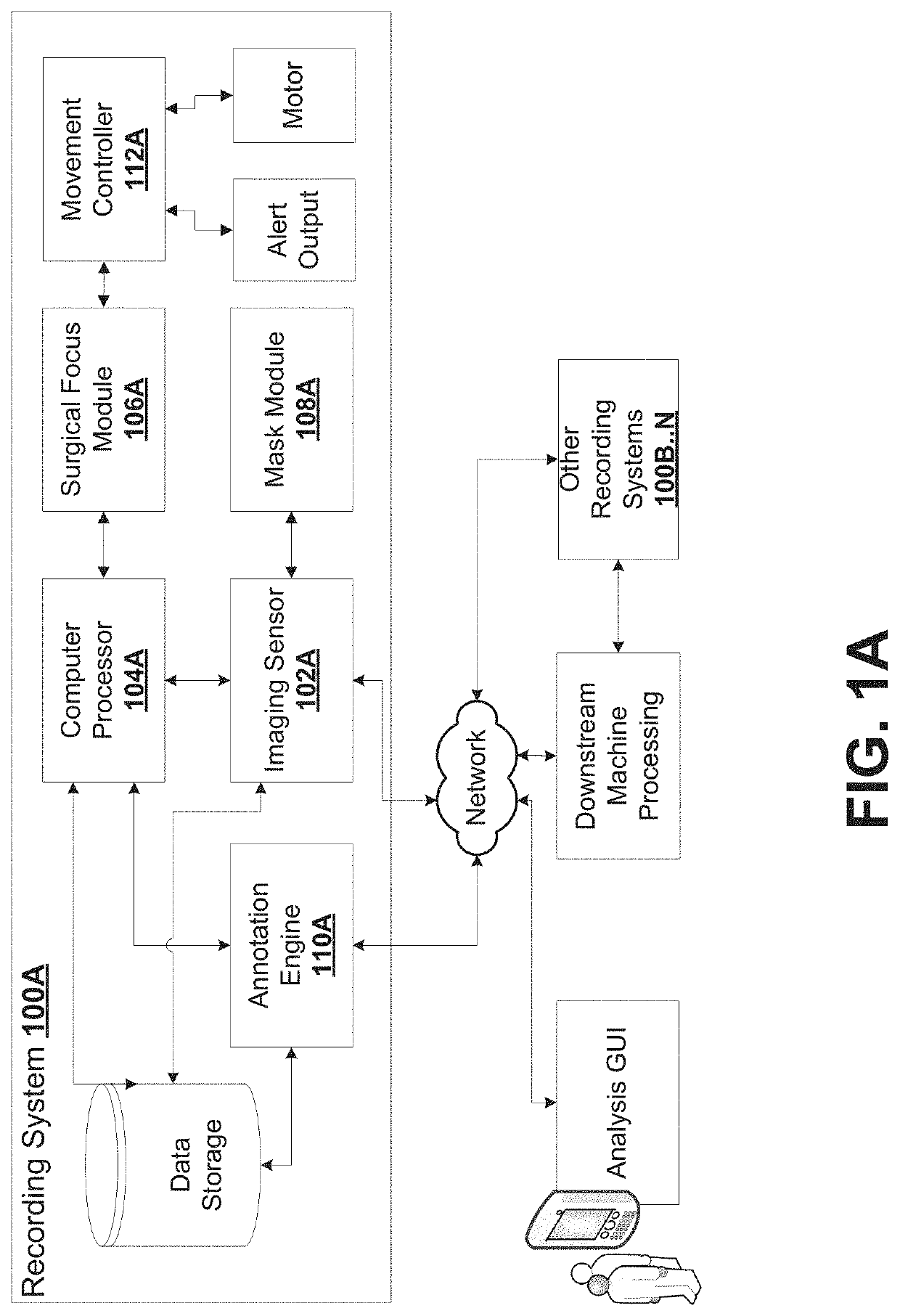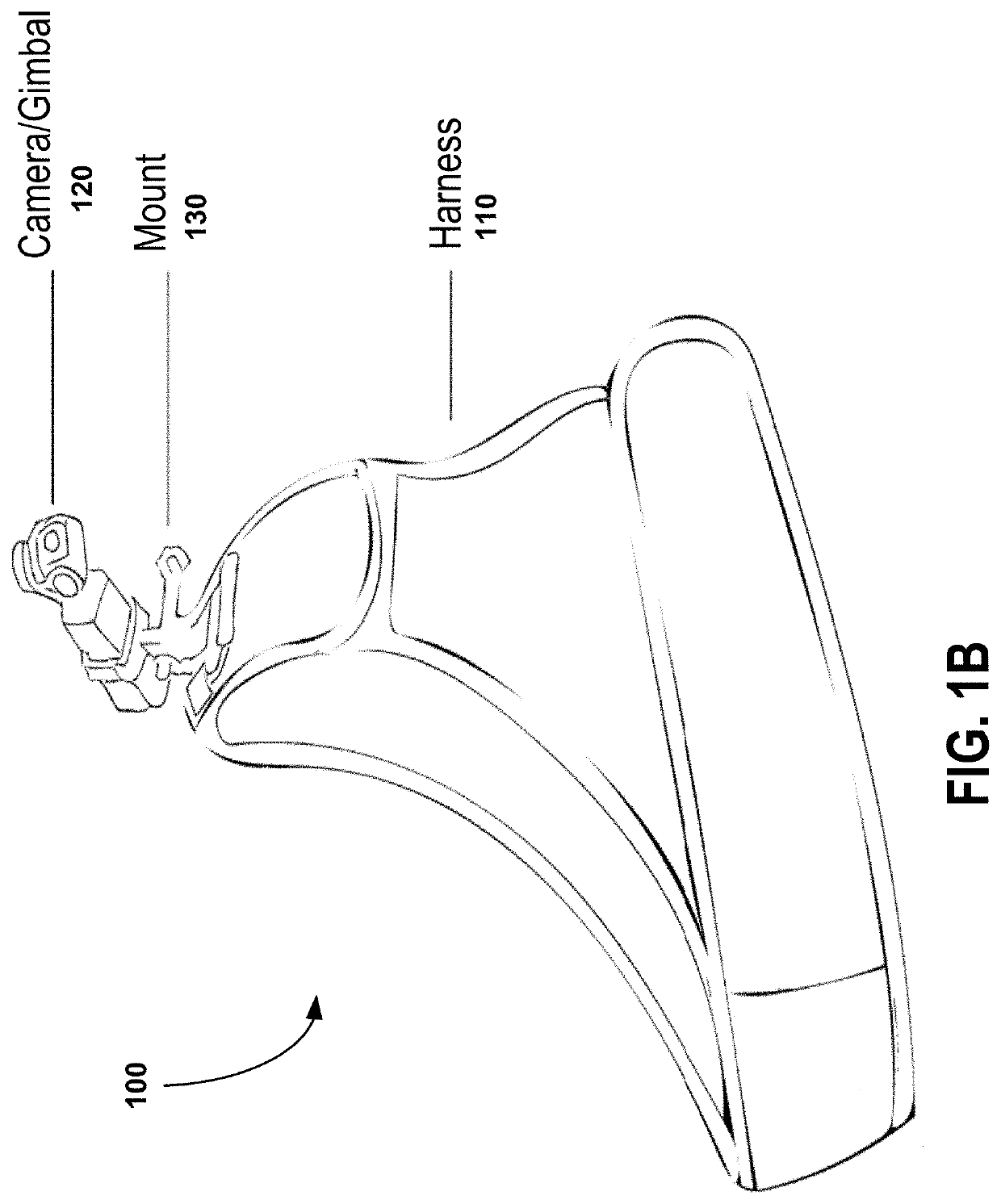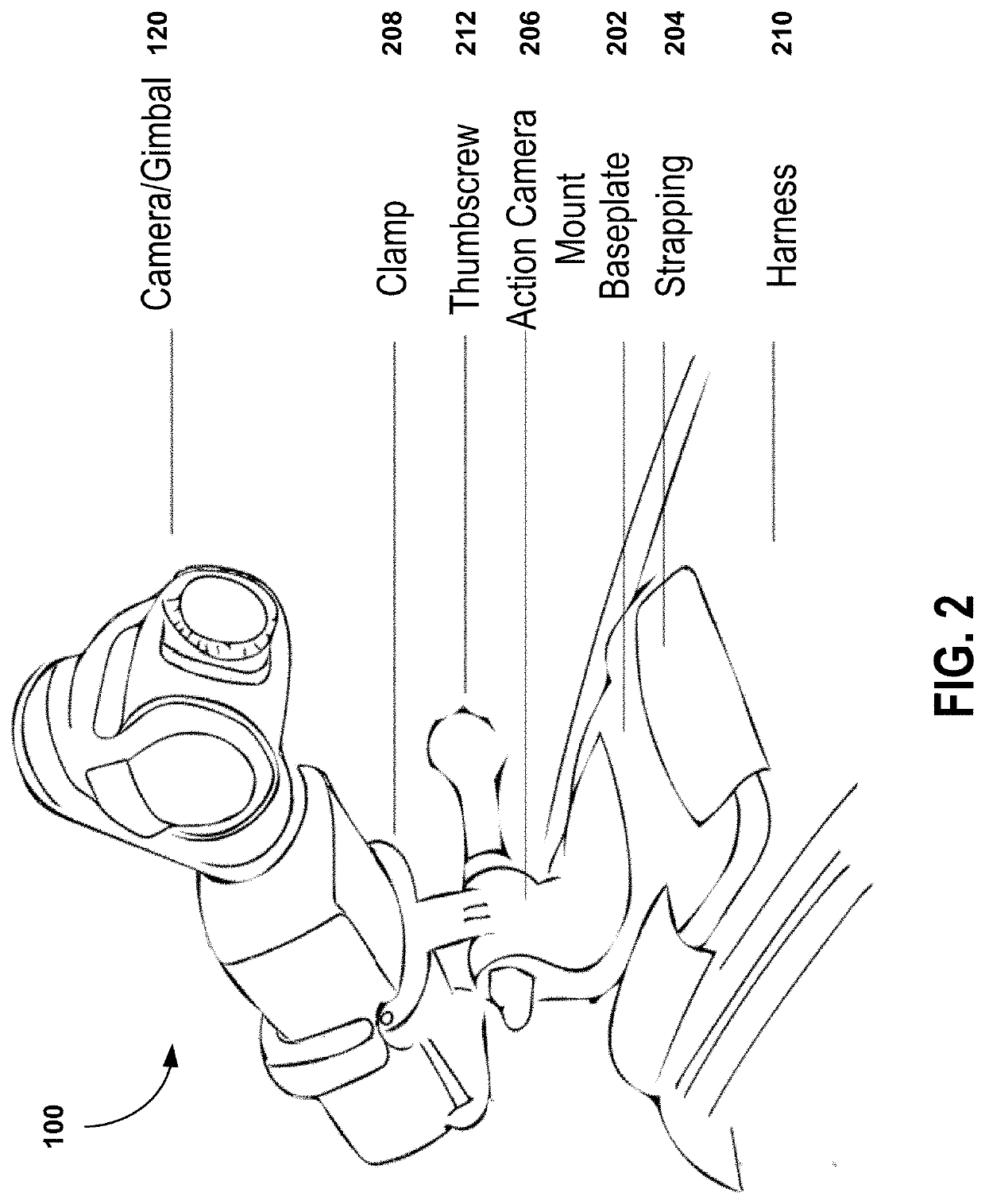Body-mounted or object-mounted camera system
a camera system and body-mounted technology, applied in the field of surgical procedures, can solve the problems of increased operative time, increased personnel cost, medical errors, etc., and achieve the effect of improving surgical outcomes and reducing overall blood loss
- Summary
- Abstract
- Description
- Claims
- Application Information
AI Technical Summary
Benefits of technology
Problems solved by technology
Method used
Image
Examples
Embodiment Construction
[0073]As described here, various approaches for an image recording system as described. The system is useful, for example, for surgical procedure recording for purposes beyond simply recording the surgical procedure. The recordings can be processed, for example, by downstream machine learning processes to automatically conduct classifications and / or predictions, which can then be used for enhanced analysis, such as automatically generated annotations for review by a specialist reviewer (e.g., on a graphical user interface), or in some embodiments where there is no specialist reviewer available, machine based procedure “scoring” or identification of critical moments.
[0074]This is particularly important where the recordings are used for ensuring patient quality and identifying lessons learned in surgical procedures. Surgical procedures are, by their very nature, often risky, and there are many variables and complicating factors that can either contribute to the success of an operation...
PUM
 Login to View More
Login to View More Abstract
Description
Claims
Application Information
 Login to View More
Login to View More - R&D
- Intellectual Property
- Life Sciences
- Materials
- Tech Scout
- Unparalleled Data Quality
- Higher Quality Content
- 60% Fewer Hallucinations
Browse by: Latest US Patents, China's latest patents, Technical Efficacy Thesaurus, Application Domain, Technology Topic, Popular Technical Reports.
© 2025 PatSnap. All rights reserved.Legal|Privacy policy|Modern Slavery Act Transparency Statement|Sitemap|About US| Contact US: help@patsnap.com



